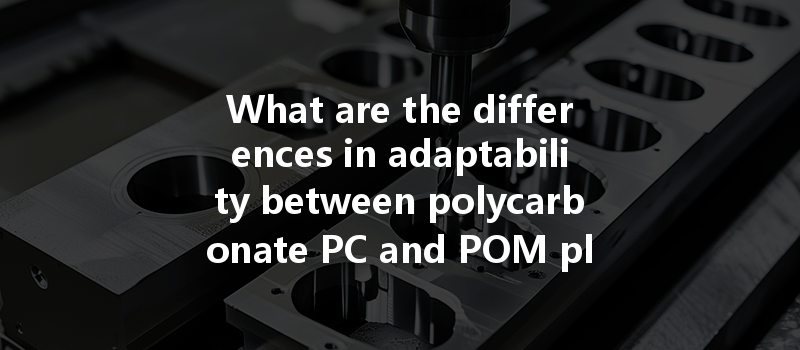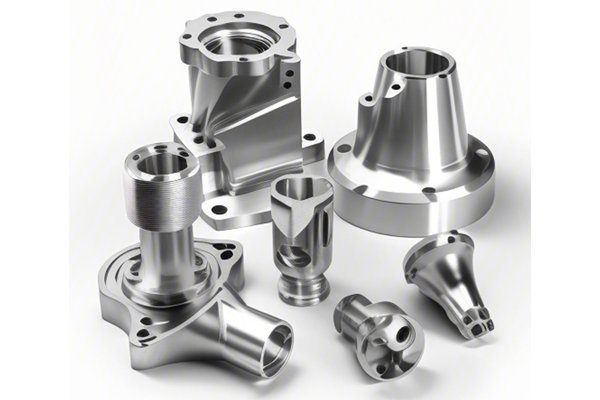In today’s fast-paced manufacturing environment, the choice of materials is critical in determining the efficiency, quality, and adaptability of CNC (Computer Numerical Control) machining processes. Among the multitude of materials available, two that stand out for their unique properties and applications are polycarbonate (PC) and polyoxymethylene (POM), also known as acetal or polyacetal. At YL Machining, we pride ourselves on having a deep understanding of these materials and their suitability for various CNC machining applications.
In this post, we will explore the key differences in adaptability between PC and POM in CNC machining. By examining their properties, machining processes, applications, and advantages, we aim to give you a comprehensive understanding that can assist you in making informed decisions for your next project.
Understanding Polycarbonate (PC)
Polycarbonate is a type of thermoplastic known for its high impact resistance and excellent transparency. It is often used in applications where durability and clarity are paramount. Key characteristics of polycarbonate include:
Polycarbonate has an exceptional ability to withstand impact, making it resistant to breaking or shattering. This feature is particularly useful in applications such as safety goggles, visors, and protective shields.
PC boasts excellent optical clarity, with a light transmittance of up to 89%. This quality makes it popular in applications requiring transparency, such as eyewear lenses and light fixtures.
Polycarbonate exhibits good heat resistance, retaining its properties at elevated temperatures. Its heat deflection temperature can reach up to 135°C (275°F), making it suitable for applications that experience heat cycles.
Though polycarbonate is relatively easier to machine than some other thermoplastics, it does require specific tooling and processing techniques to prevent issues such as melting or burn marks during CNC operations.
Understanding Polyoxymethylene (POM)
Polyoxymethylene (POM) is an engineering thermoplastic known for its high stiffness, low friction, and excellent dimensional stability. Some key characteristics of POM include:
POM has superior mechanical strength and rigidity, making it ideal for manufacturing high-load components like gears, bearings, and other intricate parts.
POM exhibits good resistance to a wide range of chemicals, solvents, and fuels, which makes it suitable for various industrial applications, including automotive and chemical processing.
It has a low coefficient of friction, allowing it to perform excellently in moving applications such as bushings and sliding components.
POM is renowned for its excellent machinability. It cuts easily with minimal deformation, allowing for tight tolerances and a high-quality finish in CNC machined parts.
Comparing the Properties of PC and POM
Understanding the mechanical and physical properties is crucial in determining the suitable application and machining process for each material. Here’s a detailed comparison:
| Property | Polycarbonate (PC) | POM |
|———————|————————–|—————————|
| Tensile Strength | 60-70 MPa | 55-75 MPa |
| Impact Strength | High | Very High |
| Flexural Strength | Moderate | High |
While both materials offer good strength, polycarbonate excels in impact resistance, while POM typically displays greater rigidity.
| Property | Polycarbonate (PC) | POM |
|———————|————————–|—————————|
| Heat Deflection Temp | 135°C (275°F) | 95°C (203°F) |
PC can handle higher temperatures compared to POM, which is an essential factor for applications involving heat exposure.

The ease of machining varies significantly between these materials:
| Chemical | Polycarbonate (PC) | POM |
|———————|————————–|—————————|
| Organic Solvents | Poor | Excellent |
| Acids | Fair | Good |
| Bases | Fair | Good |
POM emerges as the clear winner concerning chemical resistance, making it more suitable for harsh environments.
CNC Machining Process Adaptability
Now that we understand the material properties let’s discuss how these translate into adaptability within CNC machining processes.
Designing for CNC Machining
When designing parts for CNC machining, the adaptability of a material affects design choices.
Tooling Considerations
The type of tooling used for machining PC and POM varies significantly.
Surface Finish and Tolerances
Applications of Each Material in CNC Machining
Understanding where and how each material is utilized provides insights into their adaptability:
Common Applications for Polycarbonate
Common Applications for POM
When evaluating the differences in adaptability between polycarbonate (PC) and polyoxymethylene (POM) in CNC machining, several factors must be considered, including mechanical properties, temperature tolerance, machinability, and application areas.
At YL Machining, our extensive experience in the CNC machining industry allows us to offer tailored solutions for your project needs. By understanding the intricacies of both PC and POM, we can guide you in making informed material choices that align with your design, performance, and budget requirements.
As you embark on your next machining project, consider these factors carefully, and don’t hesitate to reach out to us for professional consultations to ensure the optimal selection of materials and processes.
—






